Jake Gyllenhaal Life
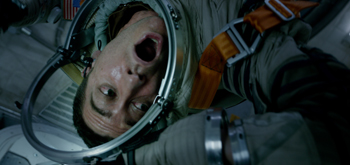
Jake Gyllenhaal Life
Cast: Jake Gyllenhaal, Rebecca Ferguson, Ryan Reynolds, Hiroyuki Sanada, Ariyon Bakare, Olga Dihovichnaya
Director: Daniel Espinosa
Genre: Sci-Fi, Thriller
Synopsis: Life is a terrifying thriller about a team of scientists aboard the International Space Station whose mission of discovery turns to one of primal fear when they find a rapidly evolving life form that caused extinction on Mars, and now threatens the crew and all life on Earth.
Life
Release Date: March 23rd, 2017
About The Production
The approach to Life was to make a terrifying thriller that feels like it could be in today's headlines. 'This script had such a degree of reality and a feeling of constant tension," says Ryan Reynolds, who stars alongside Jake Gyllenhaal and Rebecca Ferguson.
The film reunites Ryan Reynolds with his Deadpool writers Rhett Reese and Paul Wernick and his Safe House director Daniel Espinosa. 'It begins with an air of discovery that turns to a tension that permeates the whole film as we learn more and more about this thing that we've put on board the ISS." Life is an original production that originated at Skydance, where it was overseen by David Ellison and Dana Goldberg, who developed and packaged the film. Skydance then brought in Sony Pictures as the film's production and distribution partner. Director Daniel Espinosa says that before he was approached to direct Life, he had given some thought to the ways his filmmaking heroes approached science fiction.
'I think the reason so many great directors have walked into science fiction is to work with the unknown – the fear or fascination with the unknown," he says. 'We live in a world that is quite mundane, but in space, you enter an adventure – you don't know how it looks, how it feels, what it can do to you, where it is. It doesn't make a sound. That's terrifying."
After reading the script for Life, Daniel Espinosa saw a way to draw on the work of those icons and yet make a film that would bear his own personal stamp. 'This script felt more like a realistic science fiction – maybe science reality," he says, noting that scientists have discovered proof of water on Mars, thousands of exoplanets revolving around other stars, and even waking 50,000-year-old microbes that have been hibernating inside crystals.
That gives the movie a sense of urgency, says producer and Skydance CEO David Ellison. "One of the things that was very important early on from the genesis of this project was that you could feel like you could turn on the news and hear that this happened today," he says.
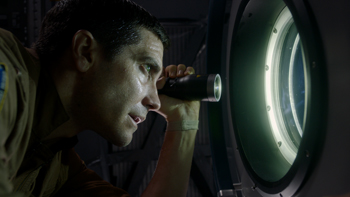 'We're not making a film that takes place a hundred years from now," adds producer Dana Goldberg. 'We very much wanted to make a film that felt more like science fact than science fiction."
'We're not making a film that takes place a hundred years from now," adds producer Dana Goldberg. 'We very much wanted to make a film that felt more like science fact than science fiction."
'Finding life on other planets is obviously extremely exciting, and I think we could be very close to that," says Paul Wernick, who co-writes the film with his partner, Rhett Reese. 'I think that grounds the movie."
It's an idea that was with the film from its genesis. 'Dana Goldberg and I had an idea around the time period when Mars Curiosity had touched down," says David Ellison. 'What if the Curiosity discovered single cell organism life on Mars and brought it back to the ISS for analysis.
Then, once it was introduced into an environment that was conducive to life, it started to grow… and what if, in the way that humanity does all of the time, with the best of intentions, it was probed, which turned it hostile. This would fundamentally turn the movie into an incredibly tense, sci-fi horror movie set on the ISS, all at zero gravity."
'We are going to Mars to try to find other life forms. So what happens when we actually find it? What happens when we communicate or relate to it?" asks producer Bonnie Curtis. 'Occasionally, we as people tend to take beautiful, brilliant things and try to shape them to our will," says Dana Goldberg. 'But this life form feels threatened and decides it wants to survive.
The tables get turned. Just because we can do something doesn't mean we should."
As Life would be differentiated by its commitment to a 'science real" approach, the filmmakers took special effort to get it right. 'What I like about this movie is that it's in the realm of the possible," says producer Julie Lynn. 'We did a lot of work to keep it in the realm of the possible. Talking to biologists, exobiologists, and geneticist Dr. Adam Rutherford… we didn't want the life form to be a person in a suit or a puppet. We wanted it to be something that could evolve from a cellular piece, a tiny cell. It's not that it comes out with an intent to do harm; it is its own creature, and it is affected by what happens to it."
'The production design on this movie is a love letter to the International Space Station," says David Ellison. 'Everything is grounded and real."
And from that real starting point, the filmmakers' terrifying imaginations took hold. 'I think what's scary about discovering extraterrestrial life is just that we don't know if its intentions will be friendly or hostile, whether its intelligence will be high or low, whether it will exploit us or be exploited by us," says Rhett Reese. 'I think that's a real fear – Stephen Hawking pointed out that extraterrestrial life may not be friendly or have the most pleasant designs on humanity."
Rhett Reese and Paul Wernick came up with an idea for a completely original alien creature. 'We had a vision for this alien whereby it began as a single-celled organism and then that cell divided many, many times, until it became a multi-cellular, complex organism that was able to navigate its environment," says Rhett Reese. 'It's not a higher intelligence – it's a combination of cells that are not differentiated. A human body has differentiated cells – muscle cells, nerve cells, blood cells, and all of these cells perform different functions. In this particular alien, every cell performs every bodily function on its own. Every cell is an eye cell, a muscle cell, a nerve cell, and as such, the creature is very, very adaptable."
'It's our worst nightmare, and the crew's worst nightmare," says Paul Wernick.
'Rhett Reese and Paul Wernick wrote a very scary, well-paced thriller, but it's really fed by their investment in the characters," says Julie Lynn. 'These six astronauts are smart, industrious, tenacious, hardworking – and when things get hairy we care about what's going to happen to them."
The filmmakers could not ask for a more terrifying location to unleash this exploration of the unknown than the cramped, zero-gravity, inhospitable climate of the International Space Station. 'The International Space Station is one of the last fundamental idealistic acts that humanity has been able to put together over the past fifty years," adds Daniel Espinosa. 'It's one of the cores of humanity: exploration, the discovery of the unknown. The movie is an homage and a tribute to that courage of meeting the unknown without fear. But at the same time, it has an undercurrent of mankind's history – we don't have a great history in how we handle the unknown. So the question is maybe not what does the unknown do to us, but what do we do to the unknown. If we treat the unknown harshly, don't you think the unknown will treat us harshly back? If we treat the unknown with fear, don't you think the unknown will respond to that fear?"
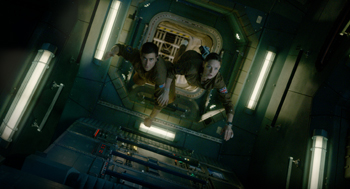 'I think Daniel Espinosa wanted to create a world that was suffocating, in a way," says Jake Gyllenhaal, who stars as David Jordan. 'In other movies, you can separate yourself from the reality of what you're seeing. Daniel Espinosa wanted to create an environment where everything was truly alive. Not only feeling that from the creature itself, but also truly alive emotionally."
'I think Daniel Espinosa wanted to create a world that was suffocating, in a way," says Jake Gyllenhaal, who stars as David Jordan. 'In other movies, you can separate yourself from the reality of what you're seeing. Daniel Espinosa wanted to create an environment where everything was truly alive. Not only feeling that from the creature itself, but also truly alive emotionally." Jake Gyllenhaal's character, David Jordan, has the distance and remove of a man who has spent over 473 days on the International Space Station. No one knows this home better than he does. The new crew members joining him are there using his home in space as a base for their mission: to discover the first proof of life on Mars.
Jake Gyllenhaal was intrigued not only by the script's scares, but the larger ideas behind the characters. 'It was a beautifully paced, terrifying script. It's a fun idea – you think you know where it's going, and then it evolves into something where you really, really don't," he says. 'The life form is literal, but it's also an incredible metaphor for what can happen. Curiosity is one of the most important human traits, but I think searching too far can be full of hubris. In that way, the life form is a repercussion for that kind of curiosity."
While Jake Gyllenhaal was attracted to the project for the script and story itself, he also saw a way to honor a family legacy with his role. 'My grandfather was a doctor, and Daniel Espinosa and I talked about the similarities in my character to my grandfather," he says. 'It's a bit of an homage to him."
Rebecca Ferguson plays Miranda North, on loan to the mission from the Centers for Disease Control. By the book and focused on her work, she is there to keep everyone on the crew and back home on Earth healthy - no matter what they encounter in space.
'Miranda North is a microbiologist sent up to protect everyone on Earth from whatever this is that we find," Rebecca Ferguson explains. A rigorous scientist, she has set up multiple firewalls to protect themselves and Earth from possible contamination. 'The firewall is, first, the container that the specimen was in. And then the room. And then the station itself. She has to do whatever she can do to protect Earth, because we don't know what this life form is."
Rebecca Ferguson says that each of the characters responds to the moment of discovery – and the threat it represents. 'We all have our own relationship to this creature. Some of us love it, we nurture it. Some of us want to kill it off in the beginning. And that creates an incredible tension in the group," she says.
'Some of us are a little more excited than others. Some are incredibly aggressive, others more conservative. And these ideas are mixed together – but like a lot of human actions, we push things a little farther than we should," explains Ryan Reynolds, who plays mission specialist Rory Adams.
Rory Adams is the spacewalk specialist, and he'll tell you just how cool that is. (It's f-in cool.) Just charming enough to keep from being called cocky, and way more handsome than he needs to be, Rory Adams is the rock star of the mission.
'A mission specialist is a fancy way of saying he's a mechanic who understands how the ship works, how to fix anything that breaks," says Ryan Reynolds. 'He's also the guy that specializes in the spacewalk and he operates the Canadarm, a system that they use to capture the Mars capsule that is hurdling through space."
Ariyon Bakare plays Hugh Derry, the British scientist in charge of analysing the alien creature. This moment is the culmination of his life – not just his career, but every dream he's had since he was ten years old.
'He's a paraplegic – he lost the use of his legs when he was ten years old," Ariyon Bakare explains. 'The creature represents the beginning of our findings – there are so many things you could find out just by finding this specimen. We have no idea what it could mean for life on Earth, and Derry has a special connection with it in that way."
To play a paraplegic in zero gravity required a bit more harness work from Ariyon Bakare than from the other actors. 'All of the other characters have one harness, but I had three: a body harness, a swivel, and a jerk vest, which was like a straightjacket," he says. 'Derry can't move his legs, so in one particular scene – when his hand gets crushed – his legs have got to be wild and ferocious."
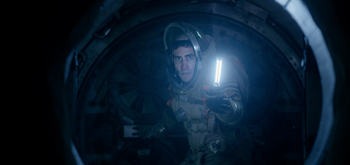 Ariyon Bakare admits that the script scared his pants off before he even joined the project. 'I was reading the script, got to one page and I literally screamed," he says. 'I was just shocked by how it guides the characters into this false sense of security. You think that everything's going to be all right, and then it twists into something else."
Ariyon Bakare admits that the script scared his pants off before he even joined the project. 'I was reading the script, got to one page and I literally screamed," he says. 'I was just shocked by how it guides the characters into this false sense of security. You think that everything's going to be all right, and then it twists into something else." Sho Murakami, played by Hiroyuki Sanada, is the flight engineer and elder statesman on board. His anxiety is higher than anyone else on board, but not because of the dangers of space – after years of trying, he is about to become a father, with his expectant wife much too far away. Of course, when the creature begins to wreak havoc, that anxiety becomes something else. 'He starts to lose his mind, little by little – he panics," says Sanada.
The mission is under the command of Russian cosmonaut Ekaterina Golovkina, played by Olga Dihovichnaya. Fiercely loyal, brave, and demonstrating the cool head of a leader, the safety of her crew is her top priority.
'My character demonstrates a common human fear of the new and unknown," she says. 'One side of her is in control and in charge – the commander – but there is also a side that has this fear and she often reacts defensively."
Science Real
Life represented a journey of discovery as the filmmakers – Daniel Espinosa, the screenwriters Rhett Reese & Paul Wernick, and producers David Ellison, Dana Goldberg, Bonnie Curtis, and Julie Lynn – consulted with astrobiologists, space medicine experts, and other scientists not only to create the realistic, zero-G world of the ISS that we all familiar with, but also to create a new life form that was wholly unique and original to film, but drew on very real biological principles that would inspire a terrifying creature.
In their research, they turned to two technical advisors: Dr. Kevin Fong and Dr. Adam Rutherford.
'Space is an extreme environment, like any of the extreme environments we've attempted to conquer in the 20th century – deserts, polar ice caps, our highest mountains," says Kevin Fong, whose training as an astrophysicist and as a medical doctor made him uniquely suited to work with NASA's Human Adaptation and Countermeasures Office at Johnson Space Center in Houston. As an expert in space medicine – how to keep astronauts healthy and alive in space – both David Jordan and Miranda North would have training like Kevin Fong's. 'What we know about extreme environments is that you can't go there for long and it's not without penalty – you come back literally less than the person you were."
'As a doctor, when you're looking at protecting human life in this environment, you're really aware of how fragile it is. When you add an extra threat by way of something alien, the questions become even harder," Kevin Fong continues. 'It's hard enough to stay alive up there on a routine mission when everything goes right. When things start to go wrong, people start to die off pretty quickly."
Hugh Derry would have training closer to that of Dr. Rutherford, a British geneticist who has published influential books on the creation of life and the use of genetic modification to make new life forms. 'When you're dealing with unknown agencies or unknown organisms, possibly dangerous, possibly infectious, there's a number of protocols in place to stop any potential threat," says Dr. Rutherford, describing Derry's lab. 'You know these are rigorously enforced with smallpox and Ebola – there are tight regulations which are all managed by major organisations like the CDC. In this case, it's contained in an incubator, which is contained in a sealed lab, which is on the ISS in low-Earth orbit. This seems like a sensible protocol at the time…"
'I worked with Ariyon a lot before we started filming," Dr. Rutherford continues. 'He wanted to understand the mindset of a scientist. Finding proof of extraterrestrial life is the most important discovery in the history of science, but as a scientist, you've got to figure out what the hell it is and what you're going to test, so you can explain what this thing is."
Kevin Fong's expertise came in helping the filmmakers understand how real astronauts might respond to the threat on board the ISS. 'I spent days watching the film scenes and thinking, -If you were the doctor on that mission, what would be happening?" says Fong. 'These are scenarios I've played out in my head in theory, but when you see it played out with this high fidelity… it was fantastic."
One of Kevin Fong's suggestions comes as Jordan has to get outside the ISS very quickly. However, the proper EVA (Extra-Vehicular Activity) suits take quite a long time to put on properly. 'We had to rethink that, think about the sort of spacesuit we'd use," Fong recalls.
'We decided to use the launch suit, which isn't quite up for the purpose of going on a spacewalk, which adds another edge to the threat of that scene."
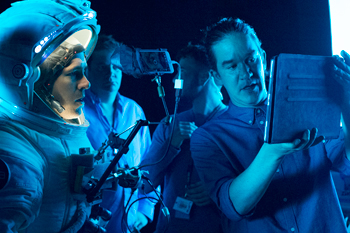 Kevin Fong and Rutherford say that while the discovery of life on Mars is definitely science fiction for now, the idea might not be all that far-fetched. 'Mars is an object of fascination, because about four billion years ago, conditions on Mars were very similar to the conditions on Earth at that same time," says Kevin Fong. 'The big question is whether life happened on Mars. It had the conditions that would have allowed life to arise."
Kevin Fong and Rutherford say that while the discovery of life on Mars is definitely science fiction for now, the idea might not be all that far-fetched. 'Mars is an object of fascination, because about four billion years ago, conditions on Mars were very similar to the conditions on Earth at that same time," says Kevin Fong. 'The big question is whether life happened on Mars. It had the conditions that would have allowed life to arise." The Mars of today is another story. 'We don't think that a life form would survive on the surface of Mars. The atmosphere is too thin and it would be sterilized by ultraviolet radiation," Rutherford notes. Still, there could be ways that life could have survived for millennia, and Rutherford was able to suggest one possibility:
'The idea was that the alien has been in hibernation, protected from the radiation beneath the surface of the planet."
Creating Calvin
The filmmakers' goal was to create a new kind of alien creature, the likes of which are not only unknown to human beings, but have never been seen on film before. 'We wanted to explore what could really be out there," says Daniel Espinosa. 'Not what would be a duplication of us, but what could really be out there."
Daniel Espinosa got a flash of insight from life forms that could not be more humble. Brainstorming what an alien creature might be like, Daniel Espinosa turned to slime mold. Though few living organisms are less threatening than slime mold, their unique cellular structure provided inspiration. While human beings are multicellular organisms with specialized cells (brain cells, blood cells, lung cells, etc.), slime molds remain single cells working together as a single unit. 'When I saw a slime mold video, it was like an expression of something new," says Daniel Espinosa.
'At a certain point in their life cycle, all of the individual cells come together to form these incredible 3D structures that look a little like mushrooms," explains geneticist Dr. Adam Rutherford. Some individual cells even sacrifice themselves to help the larger collective reproduce.
'I thought to myself, this is something interesting," Daniel Espinosa continues. 'It's biological, but it has a different kind of muscularity."
The production design team was led by Production Designer Nigel Phelps, who designed the ISS set for the film, and by Supervising Art Director Marc Homes, who oversaw the construction of the set and the completion of Phelps's designs. Phelps is known for his work on World War Z and two Transformers films; Homes was supervising art director on The Martian and other Ridley Scott films.
For Daniel Espinosa, there was no question that they would actually build a set of the ISS and film it, rather than create it in CG. That's why he turned to Phelps. 'The masters built the sets that their actors performed in; it's not CG. What you're watching is actually what was shot. The material you have around them will affect their characters," he explains. 'I needed somebody who could build a whole spaceship – someone who had that bombastic background, but was also precise. That was Nigel."
'The production design on this movie is absolutely stunning," says producer David Ellison. 'We want to transport people to the ISS so that you can feel like you're actually there."
Dr. Adam Rutherford agrees. 'You're in these huge hangars and there's lots of people milling around and then there's the set. You walk up the stairs, and it's plywood on the outside, and then you go through an airlock and my goodness, you're in the space station."
Building the International Space Station To build the film's International Space Station, Phelps and his team conducted hours of research into the real-life vessel, which orbits at an average altitude of 248 miles above the Earth, completing an orbit every 90 minutes.
Although the film's time period is not specified, it is meant to take place in the present day or very near future. With this in mind, Phelps designed an ISS that ages the current modules and adds a few incremental upgrades.
It is the film's only location, which adds to the tension of the cat-and-mouse game with the life form. 'There's a claustrophobia about the space – it's no more than two and a half meters wide," says Homes. 'It's become increasingly crowded with new equipment. Every surface has handles or cupboard doors so you can get behind it and store things. There are no ceilings or floors – everything is potentially storage."
The components of the set were modular designs, allowing Daniel Espinosa to film long, continuous takes from one location in the ISS to another, but also with removable walls and ceilings, allowing him to place the camera wherever he liked.
The real ISS is constructed of several areas – European, Russian, Japanese and American – some of which have been up in space for a long time, while others are more modern. The film's ISS is based on these real modules.
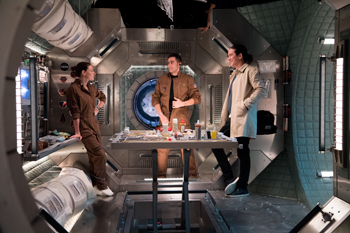 Kibo
KiboKibo is the Japanese-built and -designed science module; the name translates as 'hope." While there are several experiments currently underway on the real Kibo, in the film it serves as Derry's lab to conduct experiments on the life form.
'Kibo is Derry's theatre, where everybody watches him analyzing the specimen from the antechamber," says Ariyon Bakare. 'There is an incubator in which he can create the right atmosphere to see what the specimen might do."
That incubator serves as the first firewall against possible contamination. The second firewall is Kibo itself, with sealed doors to prevent escape. Theoretically, it's a safe environment in which to examine a new life form while protecting the rest of the crew and the station. Prop Master Barry Gibbs and consultant Dr. Adam Rutherford worked together to decide how Derry's experiments would work in zero gravity. Explains Rutherford: "The biggest problem is doing microbiology in microgravity, where anything you do is just going to float away. We spent some time thinking about what the core sample would be like and how to stop all those things from happening." Though their solution is an invented one, it's based in real science and would likely work.
Tranquility
This is a European module that serves as a medical and exercise bay. Astronauts need to exercise for a couple of hours every day to prevent their muscles from deteriorating, so there are a number of exercise machines in Tranquility. In addition, there is some medical equipment with which the astronauts perform certain experiments on themselves to send back to Earth, and ensure their ongoing health aboard the ISS.
In the film, Tranquility is the home base for Jake Gyllenhaal's character, David Jordan – both because he is the mission's doctor and because he has spent more time in space than any other person. He has spent most of his time in this module.
Zvezda
This Russian control module, which translates from Russian as 'star," is the oldest on the ship. It houses the control consoles and life support for the station.
Zarya
Another Russian module, translating as 'sunrise," Zarya is the storage compartment where the astronauts keep everything they need to live and use on an everyday basis.
Unity
In real life, Unity is a berthing module allowing vessels to connect to the ISS. For the purposes of the film, this module houses the ISS kitchen (which on the real ISS is located on Zvezda and is not as luxuriant as the film's version). Because a number of scenes involved crew members eating together, the filmmakers chose to expand this space for storytelling purposes.
In addition, propmaster Barry Gibbs and his team made up 5,000 sachets of food. "You can look at some cool videos where astronauts are eating food in space and they can take it out of the packet and it floats and they can step forward and eat it," says Gibbs. Obviously, that would not be possible with Earth's gravity. 'We decided on sachets of food that you would snip at the top and spoon or squeeze."
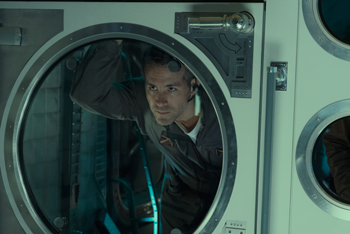 Harmony
Harmony On the real ISS, astronauts sleep by velcroing a sleeping bag to a wall. For the film's storytelling, the filmmakers created a sleeping bay with individual sleep pods in the Harmony module – perhaps the most science-fiction element of the design. The set decoration crew worked to personalize each of these pods for the individual characters. (The real Harmony is another berthing module and provides electrical power.)
Soyuz
On the real ISS there are three 'lifeboats" – Russian-built Soyuz spacecraft – which are the astronauts' means of escape if a crisis were ever to occur.
Spacesuits
Astronauts have multiple spacesuits that they use depending on the need, according to Dr. Kevin Fong. For going out into space – for example, on a spacewalk outside the ISS – astronauts use the Extra-Vehicular Activity suit. "EVA suits are basically mini spacecrafts," Fong says. 'They are totally self-contained with a portable life-support system. They do everything for the astronaut that the space station or Soyuz capsule does, just in a much smaller volume. They have protection against the formal stresses of being in space, such as extremes of cold and heat. They have a bulletproof layer of Kevlar to protect them against impacts of very small but very fast-moving particles which can do a lot of damage. They've also got sun visors against the intense solar radiation in space."
But not every activity requires the full protection of an EVA suit. "In-Vehicular Activity (IVA) suits – or the launch suits – protect the astronauts against the possibility of the hull being breached during launch or re-entry, when there is decompression and the atmosphere is lost to space. If that happens, they shut themselves inside the suits. They do not have the same level of protection as the EVA suits."
Costume Designer Jenny Beavan was charged with designing both suits for Life (not for actual use in space, Beavan kids). "The EVA suit is obviously a complete cheat as it's made in cotton, but it does have gorgeous features, like the gloves which are beautifully detailed and the backpack which is the suit's life support – there is everything in there that you would need for a walk of several hours outside the space station. NASA now has a much more modern pack on the front of the suit, but I felt it was rather overpowering for the actor, so I changed it and went more retro and I think it's the iconic image of an astronaut. There's also a big tool belt and all the badges that they wear that are attached by velcro, which was originally developed for NASA. Velcro is one of those wonderful inventions that we hate in period costume, but we love it in space wear!"
"The IVA suit is a larger suit and has a pram hood arrangement with the helmet, which is a parachute," continues Beavan, a ten-time Oscar® nominee and two-time winner, for her work on Mad Max: Fury Road and A Room with a View. 'It's a Russian suit, because the astronauts go up and down in a Soyuz from Kazakhstan."
'When we approached Jenny, I think she thought -Oh, spacesuits, no problem.' She said it ended up being one of the most complex endeavors of her entire career," says producer Bonnie Curtis. 'It wasn't just designing costumes – it had to work with the proper props, set decorating, wirework… the costumes had to hide the harnesses. The material was determined by what would be believable as zero G – the clothing isn't going to hang. Every department got involved."
"It is claustrophobic being in the spacesuit and it's very heavy, but the design is incredible and it's very manageable because it actually moves," says Rebecca Ferguson, who wore Beavan's IVA suit. 'It's an incredible feeling when you want to put a glove on and it goes 'click.' You feel like you're really getting into astronaut mode."
Beavan also made some minor changes to the design of the helmet: "I changed the shape, because I wanted to make it our own – the Life helmet. Inside the helmet is a comms cap made of leather, and in the earpieces real astronauts would have communication with Earth and with each other, as they can hear nothing once the helmets are on. In the case of the film, they were also proper working pieces so that the Director could talk to them and the actors could talk to each other."
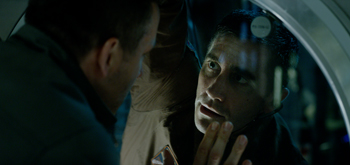 Creating 'Zero G"
Creating 'Zero G" (Technically speaking, there is gravity on the ISS – it is the space station's orbit around the Earth that causes people and objects to float… but the world calls this effect 'zero G.") Despite the zero G on the ISS, Life was filmed in London, which – last time we checked – measured one G. The filmmakers would create a zero G effect for the actors with harnesses and other effects.
Daniel Espinosa gave very clear direction to the stunt team and the movement coach as to what he wanted to achieve in his shots – including a flying camera, actors flying in and out of the shot, and coming around corners. All of these required a sophisticated collaboration between the stunt team, headed by Stunt Coordinator Franklin Henson, Movement Coach Alexandra Reynolds, and the actors. 'It was exciting to get to know what was possible on the rig and what sort of rig to use," says Alexandra Reynolds. 'It was very liberating to have a 360 degree world of movement available to me and the actors."
Alexandra Reynolds and Henson's stunt team trained the actors for two hours a day leading up to production. "Zero G is particularly hard to achieve," she explains. 'It's physically challenging, because you're trying to mimic something. There are various aids to this such as rigs and wires or even just a small movement in your legs when you're holding onto a grab handle or strap, but you still have to maintain that consistent feeling of zero gravity. It's very demanding on the body and something that needs to be learned and ingrained over time so that it becomes second nature for the actor who can then be involved in the business of acting." "The training took quite a while and included working with the stunt team on wires. But we also came up with various physical devices that the actors could practice in their daily life," Alexandra Reynolds
On the whole, Ryan Reynolds found zero gravity an exciting challenge. "We had to do a lot of training," he recalls. 'We had an obstacle course set up in the weeks leading up to shooting where we played around on the wires and learned what the wires are capable of doing and how much we could move around. There's no sequence in the movie where we're not weightless. We were always on wires, always floating and slightly moving all the time. It can feel bizarre, because you get invested emotionally in the scene, and then suddenly you forget to move, you forget to float. It was a challenge, but it's fun playing an astronaut."
Franklin Henson, the film's stunt coordinator, headed the team controlling the harnesses and wires, working closely with Alexandra Reynolds on the actors' stunt movements. 'We put all the actors on individual wire rigs, so they could fly up and down the sets, basically controlling it themselves," he says. 'We have a number of harnesses – jerk vests, leg cuffs, swivel harnesses – from which they are picked up from the hips. You need a good core strength; if you start to flop, gravity will drag you down. It's hard work, but by the sixth or seventh session they were flying beautifully."
Henson is another veteran of the production of Gravity, and says that Life went one better. 'On Gravity, we were doing wire work, but we were assisted by puppeteers. On this film, the actors are actually flying themselves. There isn't any assistance other than brailing wires over for them to get to the places they need to. We were not physically touching them – they were actually flying themselves."
Zero G wasn't only about the actors – the props also were in free fall. Some of the more unusual challenges for propmaster Barry Gibbs involved creating complex pieces of machinery that had to look weightless. One example: an incinerator that is rigged by the astronauts to become a flame thrower. "We had to make a heavy piece of machinery light enough for the actors to be able to carry it and look like there's no weight." They achieved this with the use of puppeteers. Fong has huge admiration for how well the cast and filmmakers achieved the impression of zero gravity in the film. "Trying to show the absence of gravity when you're in a gravitationally laden environment is phenomenally difficult," he says. 'I thought these filmmakers did an incredible job."
About The Music
For the musical score to the film, Daniel Espinosa turned to his longtime collaborator, Jon Ekstrand. The composer and the director team up for the sixth time with Life.
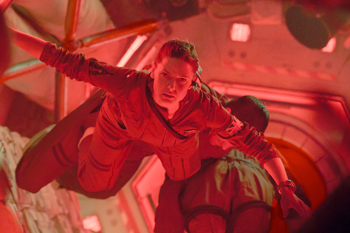 'Daniel Espinosa always invites me early in the process," says Jon Ekstrand. 'He sends me the script and wants to hear my initial musical ideas. I always like to visit the set which gives me inspiration in the early writing stage. We talk about other films and musical references and what kind of character the music should have, and what instrumentation is the right feel for this film."
'Daniel Espinosa always invites me early in the process," says Jon Ekstrand. 'He sends me the script and wants to hear my initial musical ideas. I always like to visit the set which gives me inspiration in the early writing stage. We talk about other films and musical references and what kind of character the music should have, and what instrumentation is the right feel for this film." For Life, Jon Ekstrand's two major musical ideas were to mirror the film's tonal shift and to provide an atonal score that reinforced the film's thriller themes. 'The score is more melodic, drawing on classical cinema, in its first third – I didn't want to give away what's coming," he says. 'Then it becomes atonal in a way that fits a terrifying thriller. It starts off beautiful and melodic – and in the third reel, it becomes more ominous and dissonant."
That score ended up being the biggest that Jon Ekstrand has ever composed, performed by a 100-piece orchestra and 32-voice choir. Ekstrand moved his studio from Stockholm to London to be closer to Daniel Espinosa during the editing process. For Daniel Espinosa, reuniting with one of his oldest and most trusted friends and collaborators meant that the score to the film would be infused with a personal history that no other composer could provide. 'I was 21 when I met Jon Ekstrand. He was a brilliant DJ who knew how to get into all the clubs… all the secret spots with the odd music and the strange people – the spots where we could reimagine our future," says the director. 'Since then, we've become the best of friends, and I've seen him pour his bravery, his vision, and his tenacity into his work. He's still drawing on that odd music we heard when we were 21 – he's still imagining our futures, dreaming, and pouring his creativity into his work."
Life
Release Date: March 23rd, 2017
MORE
- Mission: Impossible Fallout
- Glenn Close The Wife
- Allison Chhorn Stanley's Mouth Interview
- Benicio Del Toro Sicario: Day of the Soldado
- Dame Judi Dench Tea With The Dames
- Sandra Bullock Ocean's 8
- Chris Pratt Jurassic World: Fallen Kingdom
- Claudia Sangiorgi Dalimore and Michelle Grace...
- Rachel McAdams Disobedience Interview
- Sebastián Lelio and Alessandro Nivola...
- Perri Cummings Trench Interview



